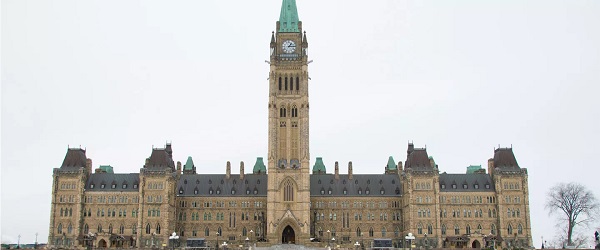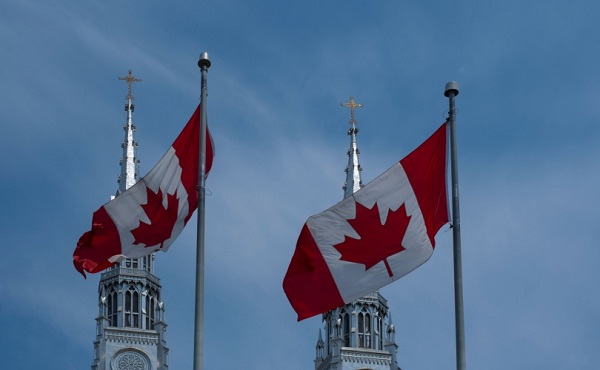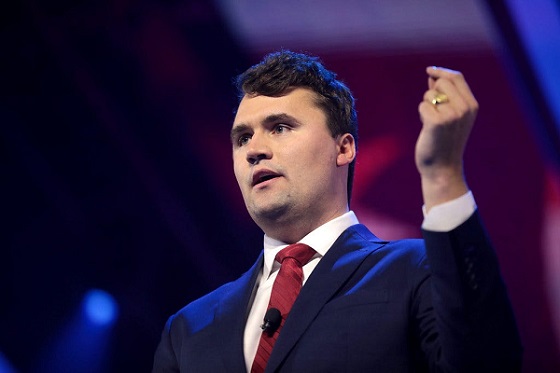Business
Comparing four federal finance ministers in moments of crisis

From the Fraser Institute
By Grady Munro, Milagros Palacios and Jason Clemens
The sudden resignation of federal finance minister (and deputy prime minister) Chrystia Freeland, hours before the government was scheduled to release its fall economic update has thrown an already badly underperforming government into crisis. In her letter of resignation, Freeland criticized the government, and indirectly the prime minister, for “costly political gimmicks” and irresponsible handling of the country’s finances and economy during a period of great uncertainty.
But while Freeland’s criticism of recent poorly-designed federal policies is valid, her resignation, in some ways, tries to reshape her history into that of a more responsible finance minister. That is, however, ultimately an empirical question. If we contrast the performance of the last four long-serving (more than three years) federal finance ministers—Paul Martin (Liberal), Jim Flaherty (Conservative), Bill Morneau (Liberal) and Freeland (Liberal)—it’s clear that neither Freeland nor her predecessor (Morneau) were successful finance ministers in terms of imposing fiscal discipline or overseeing a strong Canadian economy.
Let’s first consider the most basic measure of economic performance, growth in per-person gross domestic product (GDP), adjusted for inflation. This is a broad measure of living standards that gauges the value of all goods and services produced in the economy adjusted for the population and inflation. The chart below shows the average annual growth in inflation-adjusted per-person GDP over the course of each finance minister’s term. (Adjustments are made to reflect the effects of temporary recessions or unique aspects of each minister’s tenure to make it easier to compare the performances of each finance minister.)

Sources: Statistics Canada Table 17-10-0005-01, Table 36-10-0222-01; 2024 Fall Economic Statement
By far Paul Martin oversaw the strongest growth in per-person GDP, with an average annual increase of 2.4 per cent. Over his entire tenure spanning a decade, living standards rose more than 25 per cent.
The average annual increase in per-person GDP under Flaherty was 0.6 per cent, although that includes the financial recession of 2008-09. If we adjust the data for the recession, average annual growth in per-person GDP was 1.4 per cent, still below Martin but more than double the rate if the effects of the recession are included.
During Bill Morneau’s term, average annual growth in per-person GDP was -0.5 per cent, although this includes the effects of the COVID recession. If we adjust to exclude 2020, Morneau averaged a 0.7 per cent annual increase—half the adjusted average annual growth rate under Flaherty.
Finally, Chrystia Freeland averaged annual growth in per-person GDP of -0.3 per cent during her tenure. And while the first 18 or so months of her time as finance minister, from the summer of 2020 through 2021, were affected by the COVID recession and the subsequent rebound, the average annual rate of per-person GDP growth was -0.2 per cent during her final three years. Consequently, at the time of her resignation from cabinet in 2024, Canadian living standards are projected to be 1.8 per cent lower than they were in 2019.
Let’s now consider some basic fiscal measures.
Martin is by far the strongest performing finance minister across almost every metric. Faced with a looming fiscal crisis brought about by decades of deficits and debt accumulation, he reduced spending both in nominal terms and as a share of the economy. For example, after adjusting for inflation, per-person spending on federal programs dropped by 5.9 per cent during his tenure as finance minister (see chart below). As a result, the federal government balanced the budget and lowered the national debt, ultimately freeing up resources via lower interest costs for personal and business tax relief that made the country more competitive and improved incentives for entrepreneurs, businessowners, investors and workers.

*Note: Freeland’s term began in 2020, but given the influence of COVID, 2019 is utilized as the baseline for the overall change in spending. Sources: Statistics Canada Table 17-10-0005-01, Table 36-10-0130-01; Fiscal Reference Tables 2024; 2024 Fall Economic Statement
Flaherty’s record as finance minister is mixed, in part due to the recession of 2008-09. Per-person program spending (inflation adjusted) increased by 11.6 per cent, and there was a slight (0.6 percentage point) increase in spending as a share of the economy. Debt also increased as a share of the economy, although again, much of the borrowing during Flaherty’s tenure was linked with the 2008-09 recession. Flaherty did implement tax relief, including extending the business income tax cuts started under Martin, which made Canada more competitive in attracting investment and fostering entrepreneurship.
Both Morneau and Freeland recorded much worse financial performances than Flaherty and Martin. Morneau increased per-person spending on programs (inflation adjusted) by 37.1 per cent after removing 2020 COVID-related expenditures. Even if a more generous assessment is used, specifically comparing spending in 2019 (prior to the effects of the pandemic and recession) per-person spending still increased by 18.1 per cent compared to the beginning of his tenure.
In his five years, Morneau oversaw an increase in total federal debt of more than $575 billion, some of which was linked with COVID spending in 2020. However, as multiple analyses have concluded, the Trudeau government spent more and accumulated more debt during COVID than most comparable industrialized countries, with little or nothing to show for it in terms of economic growth or better health performance. Simply put, had Morneau exercised more restraint, Canada would have accumulated less debt and likely performed better economically.
Freeland’s tenure as finance minister is the shortest of the four ministers examined. It’s nonetheless equally as unimpressive as that of her Trudeau government predecessor (Morneau). If we use baseline spending from 2019 to adjust for the spike in spending in 2020 when she was appointed finance minister, per-person spending on programs by the federal government (inflation adjusted) during Freeland’s term increased by 4.1 per cent. Total federal debt is expected to increase from $1.68 trillion when Freeland took over to an estimated $2.2 trillion this year, despite the absence of a recession or any other event that would impair federal finances since the end of COVID in 2021. For some perspective, the $470.8 billion in debt accumulated under Freeland is more than double the $220.3 billion accumulated under Morneau prior to COVID. And there’s an immediate cost to that debt in the form of $53.7 billion in expected federal debt interest costs this year. These are taxpayer resources unavailable for actual services such as health care.
Freeland’s resignation from cabinet sent shock waves throughout the country, perhaps relieving her of responsibility for the Trudeau government’s latest poorly-designed fiscal policies. However, cabinet ministers bear responsibility for the performance of their ministries—meaning Freeland must be held accountable for her previous budgets and the fiscal and economic performance of the government during her tenure. Compared to previous long-serving finances ministers, it’s clear that Chrystia Freeland, and her Trudeau predecessor Bill Morneau, failed to shepherd a strong economy or maintain responsible and prudent finances.
Business
Canada’s ‘supply management’ system makes milk twice as expensive and favours affluent dairy farms

From the Fraser Institute
By Fred McMahon
While the Canada-U.S. trade negotiations continue, with much speculation about potential deals, one thing is certain: Canada’s agricultural marketing boards remain a barrier to success.
A White House official said as much: “[Canada] has repeatedly demonstrated a lack of seriousness in trade discussions as it relates to removing trade barriers.” That’s a clear reference to agricultural marketing boards, our Iron Curtain trade barrier. International trade lawyer Lawrence L. Herman aptly described boards as “Canada’s Soviet-style supply management system.”
Agricultural marketing boards are as Canadian as maple syrup, but more so. Maple syrup is international. Supply management is uniquely Canadian. No other country has such a system. And for good reason. It’s odious policy, favouring an affluent few, burdening the poorest, and creating needless friction with allies and trading partners.
President Trump’s distaste for the boards is well known. But, it’s not just Donald. The European Union, the United Kingdom, the World Trade Organization (effectively all of Canada’s trading partners)—and, wait for it, the majority Canadian farmers—all oppose the boards.
Canada claims to support free trade, except when we don’t. Canada seals off a large portion of its agricultural market with the system, but gets irritable when another country closes part of its market—say for autos, aluminum or steel.
Marketing boards employ a variety of tools, including quotas and tariffs, and a large bureaucracy to block international and interprovincial trade and deprive Canadians of choice in dairy, eggs and poultry. Without competition, productivity stagnates and prices soar.
The cost of living in the United States is 8.4 per cent higher than in the Canada, rent 14.9 per cent higher. But, thanks to our marketing boards, milk is twice as expensive—C$3.07 a litre on average in Canada versus C$1.47 in the United States. The most recent estimate of the cost of the system revealed, using 2015 data, that the average Canadian household pays an extra $300 to $433 annually because of marketing boards, hitting hard poorer Canadians, who spend a higher portion of their income on food than affluent Canadians.
Martha Hall Findlay, former Liberal MP and leadership contender, now director of the University of Calgary’s School of Public Policy, wrote with outrage, “The average Canadian dairy farm’s net worth is almost $4 million…. This archaic [supply-management] system forces a single mother on welfare to pay hundreds of dollars more per year than she needs to, just so we can continue to enrich a small number of cartel millionaires… members of the oft-vilified ‘one-percent’.”
Don’t expect meaningful negotiations. Canada’s Parliament, endorsed by the Senate, recently unanimously passed Bill C-202, which prohibits the foreign affairs minister from negotiating increased quotas or reduced tariffs for imports of supply-managed products.
The dairy industry, particularly in Quebec, is the big player. To protect this mighty lobby, Bloc Québécois Leader Yves-François Blanchet proposed C-202, backed by all parties, fearing a Quebec backlash if they stood up for Canadians, including for Quebecers who lack the privilege of owning one of province’s 4,200 multi-million-dollar dairy farms of Canada’s 9,400.
The Canadian Agri-Food Trade Alliance (CAFTA), Grain Growers of Canada (GGC), and other farm groups oppose C-202. Scott Hepworth, acting chair of GGC, said, “Parliament chose to prioritize one group of farmers over another. As a grain producer, I know firsthand how important international trade is to my family’s livelihood. Without reliable access to global markets, farmers like me are left behind.”
Canada has 65,000 grain farms and 53,000 pig and beef farms, compared to 14,700 supply-managed farms, less than one per cent of the total of 190,000 farms in Canada.
Marketing boards benefit a tiny minority of Canadian farmers while damaging the majority and increasing prices for all Canadians. One benefit of Donald Trump’s trade war against Canada has been the resolve on all levels of government to reduce home-grown obstacles to growth, including iron trade curtains between provinces.
The spineless response to C-202 reveals the weakness of that resolve and politician’s willingness to bend the knee to rich lobbies, toss other farmers under the bus, and carelessly pile on costs for Canadians, particularly low-income ones.
Business
Conservative MPs denounce Liberal plan to strip charitable status of pro-life, Christian groups

From LifeSiteNews
Conservative MPs presented a petition in Parliament defending pro-life charities and religious organizations against a Liberal proposal to strip their charitable tax status.
Conservative MPs presented a petition calling for the rejection of the Liberals’ plan to strip pro-life charities and places of worship of their charitable status.
During the September 16 session, Conservative Members of Parliament (MPs) Andrew Lawton, Jacob Mantle, and Garnett Genuis defended pro-life charities and places of worship against Liberal recommendations to remove the institutions’ charitable status for tax purposes.
“I have received from houses of worship across this country so much concern, reflected in this petition, that these recommendations are fundamentally anti-free speech and anti-religious freedom,” Lawton told Parliament. “The petitioners, and I on their behalf, advocate for the complete protection of charitable status regardless of these ideological litmus tests.”
Similarly, Mantle, a newly elected MP, added that Canadians “lament that some members opposite are so blinded by their animus towards charitable organizations that they would seek to undermine the good works that these groups do for the most vulnerable Canadians.”
Religious charities provide care and compassion to the most vulnerable in our society, but some members of the Liberal and New Democratic parties are so blinded by their animus towards religion and faith that they are actively seeking to revoke the charitable status of ALL… pic.twitter.com/O12rkw3pJ0
— Jacob Mantle (@jacobmantle) September 16, 2025
Finally, Genuis, who officially presented the petition signed by hundreds of Canadians, stressed the importance work accomplished by religious and pro-life organizations.
“(R)eligious charities in Canada provide vital services for society, including food banks, care for seniors, newcomer support, youth programs and mental health outreach, all of which is rooted in their faith tradition, and that singling out or excluding faith charities from the charitable sector based on religious belief undermines the diversity and pluralism foundational to Canadian society,” he explained.
As LifeSiteNews previously reported, before last Christmas, a proposal by the all-party Finance Committee suggested legislation that could strip pro-life pregnancy centers and religious groups of their charitable status.
The legislation would amend the Income Tax Act and Income Tax. Section 429 of the proposed legislation recommends the government “no longer provide charitable status to anti-abortion organizations.”
The bill, according to the finance department, would require “registered charities that provide services, advice, or information in respect of the prevention, preservation, or termination of pregnancy (i.e., destroying the unborn)” to disclose that they “do not provide specific services, including abortions or birth control.”
Similarly, Recommendation 430 aims to “amend the Income Tax Act to provide a definition of a charity which would remove the privileged status of ‘advancement of religion’ as a charitable purpose.”
Many Canadians have warned that the proposed legislation would wipe out thousands of Christian churches and charities across Canada.
As LifeSiteNews reported in March, the Canadian Conference of Catholic Bishops (CCCB) appealed to the Liberal government to rethink the plan to strip pro-life and religious groups of their tax charity status, stressing the vital work done by those organizations.
-

 Frontier Centre for Public Policy2 days ago
Frontier Centre for Public Policy2 days agoBloodvein Blockade Puts Public Land Rights At Risk
-

 International2 days ago
International2 days agoFrance records more deaths than births for the first time in 80 years
-

 Business2 days ago
Business2 days agoThe Truth Is Buried Under Sechelt’s Unproven Graves
-

 Energy2 days ago
Energy2 days agoA Breathtaking About-Face From The IEA On Oil Investments
-

 COVID-191 day ago
COVID-191 day agoFreedom Convoy leader slams Canadian gov’t agency for praising its treatment of protesters
-

 Christopher Rufo12 hours ago
Christopher Rufo12 hours agoCharlie Kirk Did It All the Right Way
-

 National2 days ago
National2 days agoChrystia Freeland resigns from Mark Carney’s cabinet, asked to become Ukraine envoy
-

 Alberta1 day ago
Alberta1 day agoSylvan Lake high school football coach fired for criticizing gender ideology sends legal letter to school board










